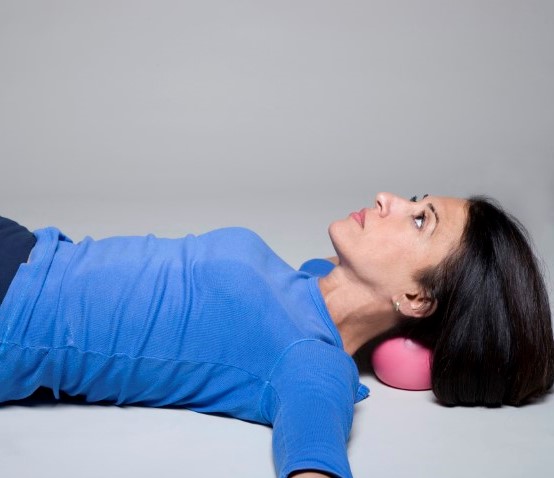If you’ve ever tried to relax by telling yourself to relax—you know it rarely works. When people use the Miracle Ball Method, they often start by chasing a feeling they had the first time the balls felt good. But trying to recreate that feeling becomes a trap.
Here’s what you really need to know:
Relaxation is not the direction—it’s the result.
Why “Relax” Doesn’t Work
One of the biggest misunderstandings about the method is that people focus on trying to get that same feeling again and again. They start telling themselves:
“Relax.”
“Release.”
“Let go.”
But those are outcomes, not instructions.
When you’re tired, stressed, or overwhelmed, trying to force yourself to “relax” only makes things harder. Why? Because your body doesn’t operate through demands—it responds to clear, physical directions.
Your Body Is Not Emotional
Yes, emotions and thoughts affect the body, but your body itself is not emotional. That distinction changed everything for me.
I’m a highly emotional, easily distracted person with lots of mental chatter—and was very rarely at ease. I hear from others all the time:
“I couldn’t do the method at home—I wasn’t relaxed.”
That’s exactly when to do the method.
Your body doesn’t need you to be in a certain emotional state. It just needs simple, physical cues.
Give Your Body What It Understands
Start with Gravity
Your body has weight. You can’t deny it—stand on a scale and it shows up. We live in gravity all day, every day. Unlike a stone or a glass, we breathe. And this breath turns your body into a responsive, dynamic system.
Breathing naturally moves the body up and down. This is not a technique—it’s how your body already functions. But we often ignore this physical rhythm, and instead try to tell the body what to feel: “Relax! Let go!”
That’s confusing.
Clear Physical Directions Work
Instead of abstract concepts, try giving your body real directions:
- What do I do with my 200-pound body?
- What do I do with my 10-pound head?
We often don’t feel our bodies—not because we don’t breathe, but because our breath is restricted. Tight muscles limit breath, which makes movement feel difficult and effortful.
Common Symptoms of Restricted Breathing
- Backaches
- Shoulder and neck tension
- Poor posture
- Anxiety
- General discomfort
Sound familiar?
For me, anxiety shows up in muscle tension. For others, it’s racing thoughts. Either way, these are all responses to internal information—your thoughts, your stress, your habits.
And breathing plays a huge role in how your body responds.
The Breath-Body Connection
Breathing and the body are not separate systems. They’re one. Like sugar in water—they blend and create something new.
But most people try to fix their physical body, then separately work on their breath. It doesn’t work. They’re the same place.
The Real Directions
Let’s get practical. Here’s what you can do, right now, to start resetting your nervous system and releasing tension:
Step 1: Feel the Weight of Your Body
Lie down or sit. Ask yourself,
“Can I feel the weight of my body against the surface?”
If you don’t feel much, that’s okay. Keep asking gently.
Step 2: Notice Your Breathing
Are you breathing freely? Or are you holding your breath?
If you’re not sure, try this:
Step 3: Exhale with an “S” Sound
Make a soft “S” sound as you exhale.
This helps you lengthen the breath out—and the inhalation will happen naturally.
We often think inhaling is the answer, but most of the benefit comes from the exhalation. Inhaling is a reflex. When we hold our breath after inhaling, our muscles tighten, and our breath gets stuck.
Start Small
Begin with 3 to 5 minutes:
- Lie in bed
- Sit on a couch
- Even on a train
Just feel your weight and breath. That’s it.
Using the Miracle Ball Method
If you’re using the Miracle Ball, try this:
- Place a ball under the back of your head or neck.
- Ask yourself, “Can I feel the weight of this part of my body?”
- Notice if your breathing changes.
- Remove the ball and ask again:
“Has anything shifted?”
“Do I feel more grounded?”
If the answer is no, that’s perfectly okay. Most of us have been trained to ignore physical sensations and rely on effort.
But your body can respond—it just needs time and consistency.
Final Thoughts
So the next time you feel like you “need to relax,” don’t try to relax.
Instead:
- Follow the directions
- Get on the ball
- Feel the weight of your body
- Exhale with a soft “S” sound
- Go on and off over 4–5 minutes
- Observe what changes
If you notice you’re not breathing—great! That means you’re aware. And awareness is the first step.
Want to Learn More?
Visit miracleballmethod.com for:
Let your body learn to release—without trying so hard.


